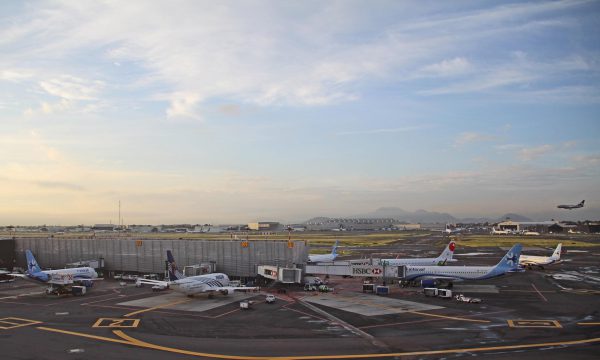GENEVA 6 March 2020: Global passenger traffic data for January 2020, measured in total revenue passenger-km or RPKs, climbed 2.4% according to the International Air Transport Association.
Based on the year-on-year comparisons the performance was down from 4.6% and is the lowest monthly increase since April 2010, at the time of the volcanic ash cloud crisis in Europe that led to massive airspace closures and flight cancellations.
January capacity (available seat kilometres or ASKs) increased by 1.7%. Load factor climbed 0.6 percentage point to 80.3%.

“January was just the tip of the iceberg in terms of the traffic impacts we are seeing owing to the COVID-19 outbreak, given that major travel restrictions in China did not begin until 23 January. Nevertheless, it was still enough to cause our slowest traffic growth in nearly a decade,” said IATA’s director general and CEO, Alexandre de Juniac.
International Passenger Markets
January international passenger demand rose 2.5% compared to January 2019, down from 3.7% growth the previous month. With the exception of Latin America, all regions recorded increases, led by airlines in Africa and the Middle East that saw minimal impact from the COVID-19 outbreak in January. Capacity climbed 0.9%, and load factor rose 1.2 percentage points to 81.1%.
- Asia-Pacific airlines‘ January traffic climbed 2.5% compared to the year-ago period, which was the slowest outcome since early 2013 and a decline from the 3.9% increase in December. The softer GDP growth in several of the region’s key economies was compounded by COVID-19 impacts on the international China market. Capacity rose 3.0% and load factor slid 0.4 percentage point to 81.6%.
- European
carriers saw January demand climb
just 1.6% year-to-year, down from 2.7% in December. Results were impacted by
slumping GDP growth in leading economies during the 2019 fourth quarter plus
flight cancellations related to COVID-19 in late January. Capacity fell 1.0%,
and load factor lifted 2.1 percentage points to 82.7%.
- Middle
Eastern airlines posted a 5.4%
traffic increase in January, the fourth consecutive month of solid demand
growth, reflecting strong performance from larger Europe-Middle East and Middle
East-Asia routes, which were not significantly impacted by route cancellations
related to COVID-19 at that time. Capacity increased just 0.5%, with load
factor jumping 3.6 percentage points to 78.3%.
- North
American carriers’ international
demand rose 2.9% compared to January a year ago, which represented a slowdown
from the 5.2% growth recorded in December, although there were no significant
flight cancellations to Asia in January. Capacity climbed 1.6%, and load factor
grew by 1.0 percentage point to 81.7%.
- Latin American airlines experienced a 3.7% demand drop in January compared to the same month last year, which was a further deterioration compared to a 1.3% decline in December. Traffic for Latin American carriers has now been particularly weak for four consecutive months, reflecting continued social unrest and economic difficulties in several countries in the region unrelated to Covid-19. Capacity fell 4.0%, and load factor edged up 0.2 percentage point to 82.7%.
- African airlines’ traffic climbed 5.3% in January, up slightly from 5.1% growth in December. Capacity rose 5.7%, however, and load factor slipped 0.3 percentage point to 70.5%.
The Bottom Line
“The Covid-19 outbreak is a global crisis that is testing the resilience not only of the airline industry but of the global economy. Airlines are experiencing double-digit declines in demand, and on many routes, traffic has collapsed. Aircraft are being parked, and employees are being asked to take unpaid leave. In this emergency, governments need to consider the maintenance of air transport links in their response. Suspension of the 80/20 slot use rule and relief on airport fees at airports where demand has disappeared are two important steps that can help ensure that airlines are positioned to provide support during the crisis and eventually in the recovery,” said de Juniac.







